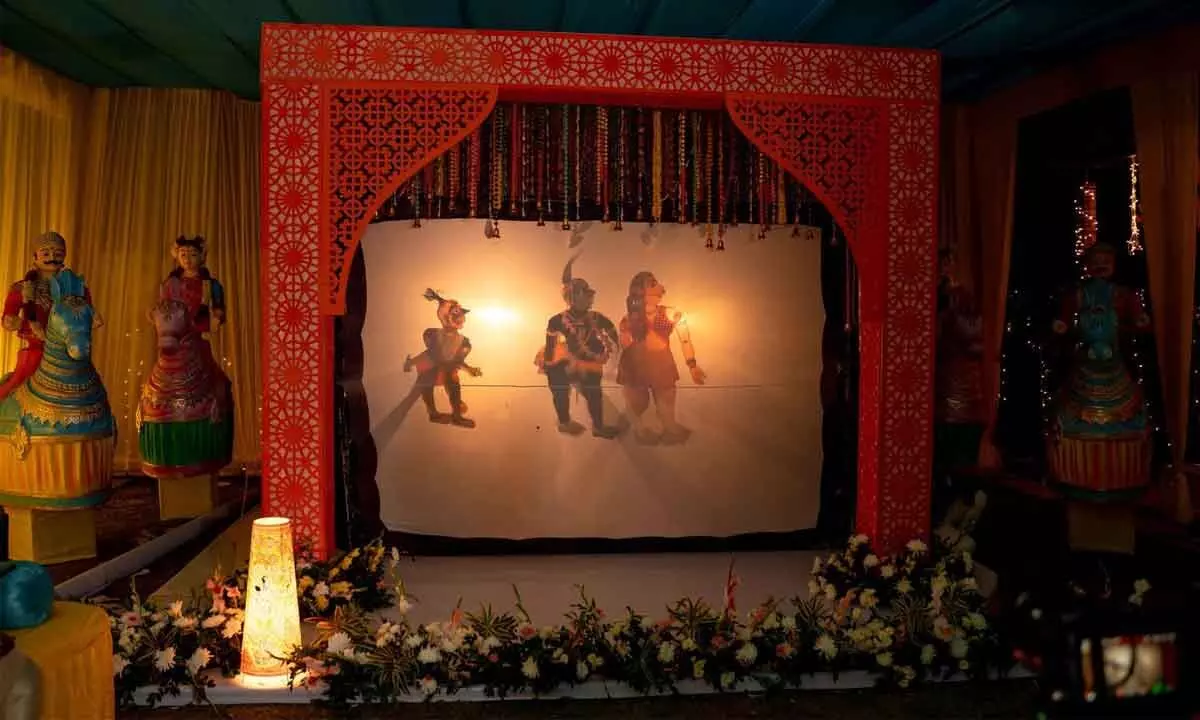Let the puppets dance their way to glory

Dating back to 3rd century BC, ‘Tholu bommalata’ – a hallmark of Andhra's culture, folklore, art, and heritage – is one of the oldest and most celebrated forms of performing arts.
Dating back to 3rd century BC, 'Tholu bommalata' – a hallmark of Andhra's culture, folklore, art, and heritage – is one of the oldest and most celebrated forms of performing arts. Translated as "the dance of leather puppets", 'Tholu bommalata' features goat and deer leather puppets painted with mineral colours. This exquisitely engaging shadow puppetry derives its characters from India's most admired and revered epics – Ramayana and Mahabharata, with a local flavour.
This incredibly gripping art form finds its birth in Nimmalakunta, belonging to the Anantapur district. A lovely sentiment precedes Tholu bommalata; whichever place is chosen to serve as a platform for the puppet show enjoys a bounty of rain and prosperity.
Popularly known for essaying some historic episodes, 'Tholu bommalata' has music and dialogues in the background, usually rendered by artists with the accompaniment of harmonium and percussion instruments. And these artists travel from far away villages to stage the show. And, what seems like mere movements of faces as an art form has hours of labour of artisans working through the clock to block an hour for spreading only joy!
'Tholu bommalata' adopted and embraced several changes to stay relevant in the dynamic society. Therefore, one can even find these changes even to be palpable. For instance, earlier, puppets were made from the skin of antelope and deer, but today, artists started using goatskin. There's a lot more, but let's look at the process:
As for its business, 'Tholu bommalata' finds its demand mostly in exhibitions. There was a time when the artisans, primarily Telugu-speaking, used to travel the world to sell their products. But Covid-19 shook the entirety of the artisans' community. Most of them were forced to take up household chores, especially those solely dependent on leather puppetry for a living. A few even work in farming fields to earn a living. Perhaps it's just a painful metaphor for us dancing to the tunes of the wicked taskmaster - COVID-19.
'Tholu bommalata' is hardly seen or practised today. It has lost its ground to television and cinema in the entertainment industry. The prospects of it coming back to life troubles most art lovers today. Most artists sell their merchandise – which is considered a derailment from the path set forth by their ancestors. Puppets are now only reduced to showpieces in households – caged behind glass doors.
Puppeteers today have shifted to making lampshades and wall hangings, which are high in demand. What's even newer is that this traditional folk art also seems to have caught the fancy of designers - and a few are already coming up with innovative ways of using this in jewellery and on bags. A puppet is free as long as he loves his strings.
The easiest and the most powerful way to revive an art form is to turn the wish into will. 'Tholu bommalata' can be a part of many social events, adding life to the setting. By engaging with it, we could reignite the fading light - the beautiful native art form. For instance, during the pre-wedding events, why can't we think of telling our love stories using puppetry instead of a wedding film? After all, puppets can say things that people can't.
(The writer is a handloom and handicraft enthusiast. She is also a member of crafts council. Instagram handle: Rajeswariramachander)
Step 1: Most of the time, the goatskin is procured from the local meat shops. Once sourced, it is soaked in water for a few hours to soften it. Post that, it is flattened and washed thoroughly with hot water to kill the germs. Then, it is left to dry for a few days, followed by several rounds of washing and cleaning until the skin is transformed into a translucent parchment.
While the original method is elaborate in fashion, today, a few artisans are found importing parchment from other states to avoid the dreary cleaning process. And yet, we think they are just puppets.
Step 2: The outlines of the figures are then drawn on the parchment using a pencil. They are then painted using a bamboo nib (and not a brush). So once the outline is drawn, the figures are created, and the marked spaces are filled with vibrant hues (generally the brighter ones). These colours used to be natural pigments once upon a time; however, today, the artisans are going for acrylic paints and brushes.
Step 3: Once the pieces are painted, the figures are cut; and the cut-out parts are stitched together to form a puppet. An interesting fact here would be that this method enables higher flexibility to the puppet, as this allows for effortless and graceful movements. The artisans also follow a unique sewing method – attaching the puppet to a stick or a handle or binding with ropes to enhance the mobility of the figure.














